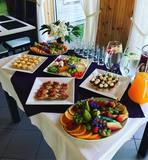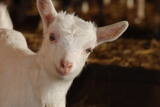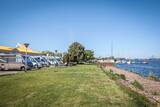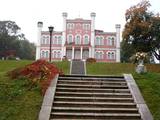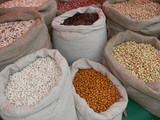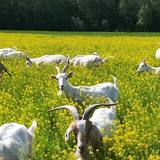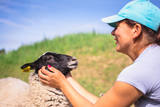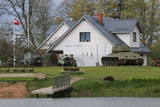| Nr | Name | Beschreibung |
|---|---|---|
|
Die Kneipe befindet sich an der Ostsee-Steilküste. Die saisonale Speisekarte legt den Schwerpunkt auf lokale Fischen und Neunaugen. Es besteht die Möglichkeit, die frisch gebackene lokale Spezialität Žograusis (Kuchen aus Roggenteig und Karotten) zu verkosten. |
||
|
Ein Familienbetrieb in Sigulda, der Obstbäume anbaut und aus deren Früchten verschiedene Getränke produziert. Bei der Verkostung werden Blumen-, Beeren-, Obstweine, das alkoholfreie festliche Getränk „Rabarber“, Brandy mit einem Apfel in der Flasche und für einen historischen Geschmack Allažu Ķimelis angeboten. |
||
|
Das Wirtshaus befindet sich am Mühlensee im Park des Schlosses von Birini und bietet eine schöne Aussicht aus seiner Sommerterrasse. Es ist in dem ehemaligen Gebäude der Mühle eingerichtet, wo die Gegenstände der alten Zeiten erhalten worden sind. Lettische Küche: Graue Erbsen mit Speck, Hering mit Kartoffeln, Keramiktopf mit geschmortem Huhn und Kartoffeln, Pfifferlingsoße, geschmortes Kraut mit Jagdwürsten, Apfelkuchen. |
||
|
The potter produces candelabras, dishes and whistles that you can buy at the workshop. She also accepts commissions for new products. You can work with your own clay and take the resulting product home with you as a souvenir. |
||
|
Die Mosterei befindet sich im Wirtschaftsgebäude des Landguts Vecgulbene - an einem Ort, der historisch zu Tālava, dem Land der alten Lettgallen, gehörte. Das ausgesprochen saisonale Klima verleiht den Vidzeme-Äpfeln eine einzigartige, knackige Geschmackspalette. Nachdem der Cidre mehrere Monate bei niedriger Temperatur gereift ist, wird der klassische Apfel-Cidre mit goldenen Quitten, Rhabarber, saftigen Kirschen und Hopfen versetzt, um ein Zusammenspiel der Geschmacksnoten zu entwickeln. |
||
|
Dieser Hof ist eine der ersten und größten Ziegenzüchtereien in Lettland. Während der Führung kann man der fesselnden Erzählung des Wirtes über die Ziegenzüchtung und die Herstellung von Ziegenmilchprodukten (Milch, Käse, Kefir) zuhören, die man hier auch kaufen und verkosten kann. In Lettland gibt es seit der Jahrhundertwende 19.-20. Jh. eine einheimische Ziegenrasse. |
||
|
Der Hof "Upenite" befindet sich am südlichen Ufer des Sees Cirisa ezers. Ein ausgezeichneter Bio-Hof, auf dem lettgallische Traditionen gepflegt, Milchprodukte (auch Käse) hergestellt, einheimische Kulturpflanzen (diese kann man auch erwerben) angebaut und die lettgallische Rauchsauna angeboten werden, in der als Saunameister die Wirte arbeiten. Meisterkurse im Backen von Torten organisiert. Lettische Küche: Bauernsuppe (Fleischbrühe mit Grützen), gefüllte Kartoffelpfannkuchen Gulbešnīki, Kartoffelwürste (geriebene unreife Kartoffeln mit gebratenem Schweinfleisch und Zwiebeln), schwarze Johannisbeeren mit Schlagsahne, Kümmelstangen, Kräutertees, Quark mit Sauerrahm, Pfannkuchen aus Sauermilch. Das besondere Gericht: Im Ofen gebackener Karpfen oder gebackene Schleie aus dem eigenen Teich. |
||
|
Auf dem Hof Adzelvieši wird Hanf angebaut, aus dessen Samen Hanfbutter und grob gemahlene Zukost hergestellt wird. An der Kornkammer (101 Jahre alt) sind alte Werkzeuge der Hanffaserbearbeitung ausgestellt. Hier kann man leckere Produkte verkosten und kaufen, sowie eine spannende Reise in die Geschichte der Hanfzüchtung unternehmen. Der gewöhnliche Hanf ist eine alte Kulturpflanze in Lettland, die hier seit mehr als 1000 Jahren angebaut wird. Lettische Küche: Grob und fein gemahlene Zukost aus Hanf, Hanfbrötchen, zerdrückte und geröstete Hanfbröckchen, Hanföl. |
||
|
Campground in Riga, by the river Daugava. A family oriented, pet friendly, relaxing place to enjoy your camping in city with a perfect river view! This is great marina and campground for RVs, travel trailers, campers, yachts and boats. |
||
|
Herbsts is a family-owned cidery producing natural, locally crafted cider in the western region of Latvia, Kurzeme. Our Story Apples Ciders For Visitors Where to Buy |
||
|
Das Schloss von Bīriņi ist von 1857 bis 1860 als der Besitz der Grafen von Pistolkors gebaut worden. Das neogotische Schloss wurde von dem Architekten aus Riga Friedrich Wilhelm Hess projektiert. Man kann Informationen darüber finden, dass nach dem Bau des Schlosses es das prachtvollste und modernste Historismus-Gebäude in der Region Vidzeme war. Den Schlosskomplex bilden ein großer Park und ein Waldpark aus dem 19. Jh. mit Anpflanzungen von ausländischen Pflanzenarten, der künstlich gebildete See Bīriņu ezers, die im Jahr 1814 gebaute Gruft mit dem Grabstein der Grafen von Mellin (um 1835), eine Wassermühle, das Haus des Verwalters, Pferdeställe und andere Gebäude. An dem Schloss sind Obelisken aufgestellt, die A. Pistolkors und N. Pistolkors gewidmet sind. Bis heute hat sich in dem Schloss die wertvolle dekorative Innenausstattung aus dem 19. Jh. erhalten. Das Schloss von Bīriņi wurde am Anfang des 20. Jhs. laut den Plänen des Architekten Rudolf Heinrich Zirkwitz umgebaut. Von 1926 bis 1995 befand sich in dem Schloss ein Sanatorium. Heute werden in dem Schlosskomplex verschiedene Veranstaltungen organisiert, hier befinden sich ein Hotel, ein Restaurant und ein Museum. |
||
|
Der Markt befindet sich in Straupe, Gemeinde Zirgi. Der Markt arbeitet unter dem Markennamen Earth Markets der renommierten internationalen Organisation Slow Food. Angeboten werden gute und reine Produkte, die in gutem Glauben angebaut werden, um die Nachhaltigkeit des Landes, das lokale Wissen und die Traditionen zu erhalten. Während der Öffnungszeiten des Marktes serviert die Küche von Straupe Zirgu pasts köstliche Speisen nach lettischen Traditionen, die aus lokalen Produkten zubereitet werden. |
||
|
Es wäre schwierig, nicht nur in der Region Vidzeme, sondern auch im ganzen Lettland einen anderen ebenso natürlichen Hof zu finden. Die Gäste können in einer alten Kornkammer übernachten, die ihren Duft noch erhalten hat, den Wirt bei der Arbeit in der Schmiede beobachten und selber einen Nagel schmieden, Ziege melken, auf Gänse aufpassen, sowie an Arbeiten auf dem Land teilnehmen: jäten, Heu ernten, Bogenschießen ausprobieren und die Sauna genießen. |
||
|
After viewing the lovely scenes that are a part of the Drubazi nature trail, which runs along the banks of the Ancient Abava River Valley, the owner offers tastings of homemade wine. He produces wines from 12 different berries, including raspberries, black currants, blackberries, lingonberries, grapes, sea buckthorn, and others. |
||
|
About 20 minutes by car from Sigulda, this is a venue that offers you a chance to go fishing in a pond that covers 3 ha and offers every opportunity for relaxation. You can rent a boat, and during the winter you can go ice fishing. Next to the pond is a two-story house with a kitchen and an opportunity to spend the night as long as you bring your own mattress. There are three rooms on the lower and three on the higher floor of the building. Next to the house is a lean-to, and there is a pergola not far from the pond. The More War Museum is a bit more than half a kilometre away. Also nearby is the Safari Park. |
||
|
Im bäuerlichen Betrieb werden Milch-und Fleischziegen gezüchtet. Exkursion zum Hof, Beobachtung von Tieren, Verkostung und Erwerb der Erzeugnisse (Milch, Joghurt, verschiedene Käsespezialitäten, Fleich, Wurst u.a.). |
||
|
The “Priedītes” Mini Zoo farm is in the Limbaži Administrative District and offers visitors a chance to get close to farm animals. Learn all about each kind of animal and its habits. Visit our rabbit garden where you will see some 40 hopping around, though there are some 100 in all. There are dwarf goats, sheep, a cow, some chickens and special tinker horses from Ireland. Horseback riding is available. |
||
|
The Museum is situated in the place, where during the times of World War II the battles between the soldiers of Latvian and Soviet armies took place.The main subject of the museum is the history of Latvians during World War II and the battle of More. On the second floor of the museum the guide will tell you about the history of crafts and will show you the exhibition of household objects. Every year there are new exhibitions of the local craftsmen’s products . The visitors can buy souvenirs, jewellery and other crafts and goods. |
||
|
Das Gut Blankenfelde befindet sich in Semgallen, eine gute Autostunde von Riga entfernt unmittelbar an der Grenze zu Litauen. Das Gut wird als Kulturerbe von nationaler Bedeutung geschützt. Der Name des Gutes wurde erstmals in der Zeit des Herzogtums Kurland und Semgallen erwähnt, als 1689-1701 Ernst von Medem Besitzer war. 1891 wurden die von Hahn Eigentümer. Im Gut gab es einst 16 Gebäude. Das Herrenhaus wurde im 18 Jh. erbaut. Dabei handelt es sich um ein einstöckiges, gemauertes Bauwerk mit Satteldach. im 19. Jh. wurde es im klassischen Stil umgebaut. 1925 wurde hier ein Heim für geistig Behinderte eingerichtet und nach dem Zweiten Weltkrieg ein Behindertenheim. Heute ist das Gut wieder in Privatbesitz und weitgehend restauriert. Unweit des Gutes befinden sich die Gräber der Familie von Hahn, die ebenfalls neu angelegt und gepflegt sind. Auch der hübsche Park des Gutes Blankenfelde wurde auf Vordermann gebracht und mit einem zeitgemäßen Kinderspielplatz ergänzt. Im rekonstruierten Marstall und Kutschstall befindet sich im ersten Stock ein Glockenmuseum und im zweiten Stock moderne Hotelzimmer, in der ruhige Erholung in dem abgelegenen Gut garantiert ist, mit schmackhaftem Frühstück am Morgen. Auf der Ostseite des Gutes befinden sich Appartements. Für Feierlichkeiten für bis zu 60 Personen stehen auch entsprechende Räumlichkeiten bereit. Im Gutspark gibt es auch Platz für Zelte und Picknicks. Man kann die Glockensammlung besichtigen. |
||
|
The “Rozītes” rose garden is found in the Sēme Parish in Kurzeme, and it covers a bit less than 3 hectares. There are more than 3,000 rose plants in the garden with 300 different varieties. There are also perennials and rare trees in the garden. Visitors will enjoy three lovely ponds which have fish in them, but they are meant more for beauty and relaxation. You can watch the fish from the terrace, walk across a flower island, and go to our amphitheatre to listen to relaxing music. On a hot summer day, visit the “water rock” to hear the bubbling sound of the surrounding water. Daila and Bruno Trubiņš will be happy to give you a tour of the garden and tell you all about the plants and how to care for them. You can purchase rose and perennial plants. Each June we organise a Rose Festival with an extensive programme for adults and children alike. Visitors are welcome to taste rose jam and drinks made of rose petals. We can host seminars, concerts, weddings and photo sessions. The garden is open from May until the end of September, and we particularly welcome visitors when the flowers are in full bloom. Ring 2646-9604 to arrange for your visit in advance, please. |
||
